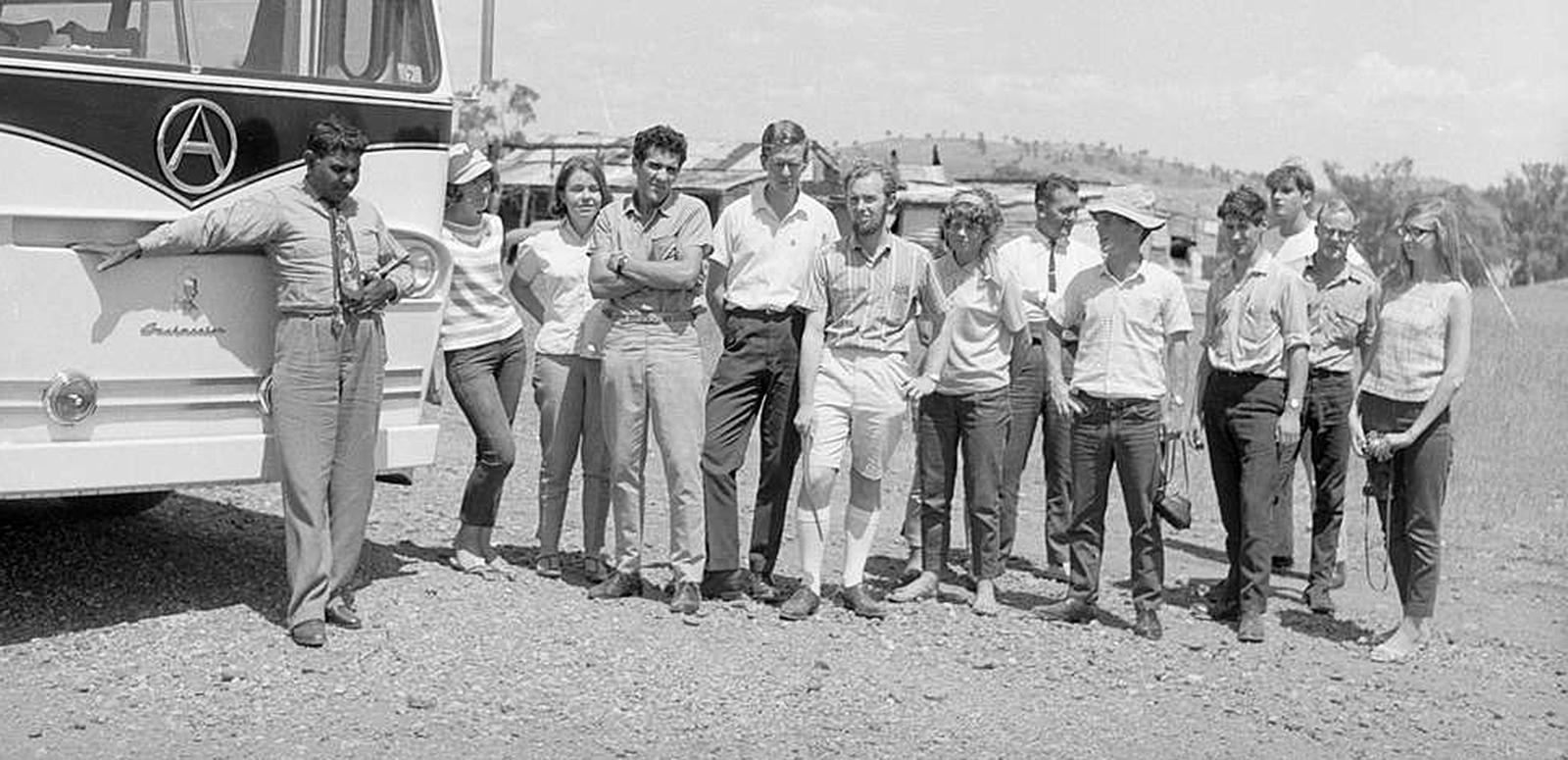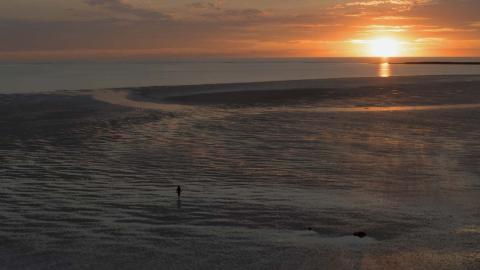

Freedom Ride 1965
Dr Perkins and the 1965 Freedom Ride
WARNING: this article contains names, images or voices of deceased Aboriginal and Torres Strait Islander people.
Our 1960s curated collection features footage from the documentary Blood Brothers – Freedom Ride (1993), directed by Rachel Perkins. The documentary covers the events of 55 years ago when Rachel's father, Dr 'Kumantjayi’ (Charlie) Perkins AO, was the first Aboriginal person to attend university. He led fellow students from the University of Sydney on a 'freedom ride’ through rural NSW to expose racial segregation in Australia.
'the White person in austraLia must be educated'
This clip, which also features in the 1960s curated collection, features interview footage of Perkins from the 1960s as well as short clips from 1965 of white Australians sharing their responses about Aboriginal people. We also see students carrying a 'Student Action for Aborigines' banner.
While Australian students in 1964 were protesting in support of the American civil rights movement, Perkins argued they should become more aware of racial discrimination occurring in their own country:
Blood Brothers - Freedom Ride, 1993. NFSA title: 250878
Joining the bus
In 1965, over 30 members of the newly-formed 'Student Action for Aborigines' group, led by Perkins, travelled by bus to rural NSW.
They visited numerous towns including Wellington, Gulargambone, Moree, Walgett, Lismore, Bowraville, Dubbo and Kempsey.
Among the laws they protested was a local ban on Aboriginal children from going to the Moree public swimming pool.
In this clip, Perkins talks about the importance of the students gaining the support of the local Aboriginal community. The clip incorporates historic footage and a re-enactment of children joining the Freedom Ride students on the bus to go swimming at Moree pool.
We also hear the voice of Lyle Munro, one of the children from 1965, recalling the experience as ‘one of the greatest days in my life as a young person’:
Blood Brothers - Freedom Ride, 1993. NFSA title: 250878
A decade of change
The protest at Moree – which led to confrontation with locals – was broadcast across Australian media and, under pressure, the Moree Council reversed the ban.
News of Australia’s Freedom Ride was widely reported, including in The New York Times. It raised the public’s consciousness of racial discrimination in Australia and strengthened campaigns to bring about greater equality.
In 1967, the federal government held a referendum to amend the Constitution to include Aboriginal and Torres Strait Islander peoples in the census and allow the government to legislate separately for Indigenous people.
It received overwhelming support from the Australian public.
Explore other key 1960s moments in history, events, true crime, pop culture, sport, fashion and advertising in our 1960s curated collection.
Note: 'Kumantjayi’ is the name used in Arrernte culture when a person is deceased. Dr Perkins passed away in 2000, and in the culture of the Arrernte people, the person’s first name is replaced with the word 'Kumantjayi’ out of respect.
Main image: Charles Perkins (fourth from left) stands with other activists next to the Student Action for Aborigines bus in Bowraville (1965), State Library of NSW.
The National Film and Sound Archive of Australia acknowledges Australia’s Aboriginal and Torres Strait Islander peoples as the Traditional Custodians of the land on which we work and live and gives respect to their Elders both past and present.


